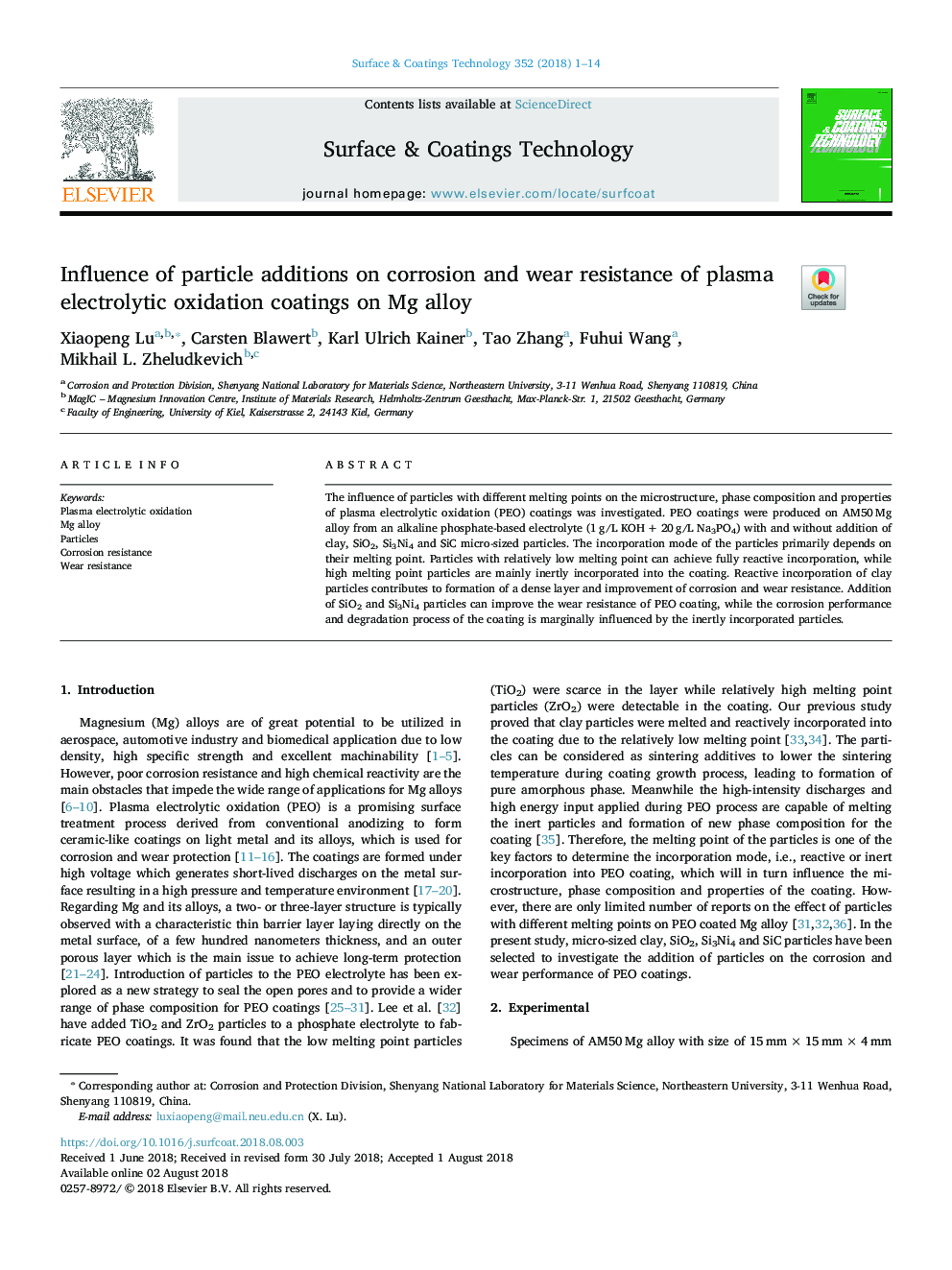| Article ID | Journal | Published Year | Pages | File Type |
|---|---|---|---|---|
| 8023242 | Surface and Coatings Technology | 2018 | 14 Pages |
Abstract
The influence of particles with different melting points on the microstructure, phase composition and properties of plasma electrolytic oxidation (PEO) coatings was investigated. PEO coatings were produced on AM50â¯Mg alloy from an alkaline phosphate-based electrolyte (1â¯g/L KOHâ¯+â¯20â¯g/L Na3PO4) with and without addition of clay, SiO2, Si3Ni4 and SiC micro-sized particles. The incorporation mode of the particles primarily depends on their melting point. Particles with relatively low melting point can achieve fully reactive incorporation, while high melting point particles are mainly inertly incorporated into the coating. Reactive incorporation of clay particles contributes to formation of a dense layer and improvement of corrosion and wear resistance. Addition of SiO2 and Si3Ni4 particles can improve the wear resistance of PEO coating, while the corrosion performance and degradation process of the coating is marginally influenced by the inertly incorporated particles.
Related Topics
Physical Sciences and Engineering
Materials Science
Nanotechnology
Authors
Xiaopeng Lu, Carsten Blawert, Karl Ulrich Kainer, Tao Zhang, Fuhui Wang, Mikhail L. Zheludkevich,
